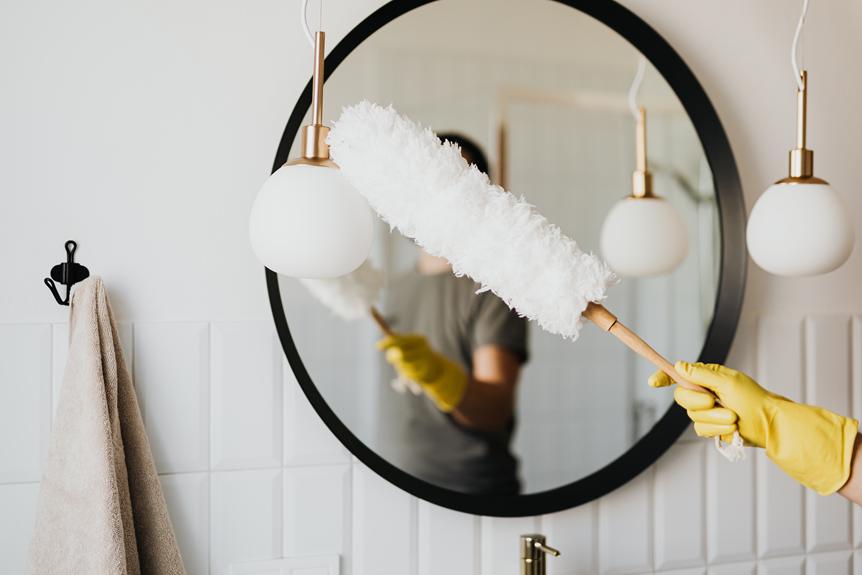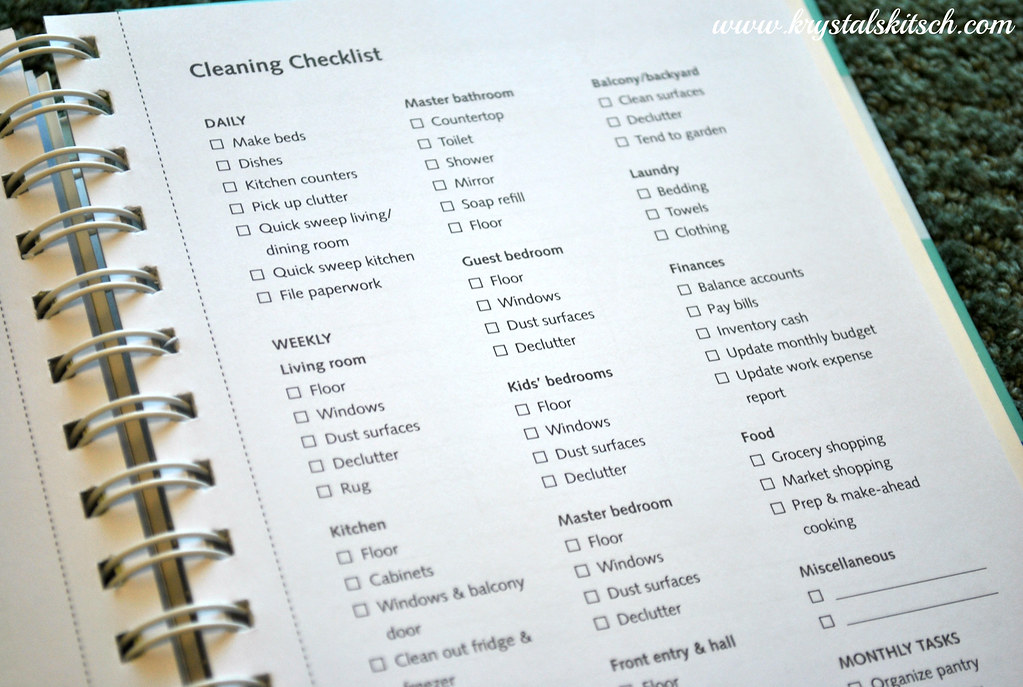

Want a home that sparkles with cleanliness? Look no further! We’ve got the scoop on 12 easy daily cleaning habits that will keep your home spotless.
From making your bed to freshening up the air, these simple tasks will have your home looking its best in no time.
So grab your cleaning supplies and get ready to tackle each task with ease. With these habits in place, you’ll be enjoying a clean and safe environment every day.
You should start off your day by making your bed to create a neat and organized environment. Bedroom organization is essential for a peaceful and safe living space.
Making your bed is a simple and effective way to start your morning routine and set a positive tone for the rest of the day. It may seem like a small task, but it can make a big difference in how your bedroom looks and feels. When you make your bed, you instantly create a sense of order and cleanliness.
Plus, it helps to keep your sheets and blankets in place, reducing the risk of tripping or falling. So, take a few minutes each morning to make your bed and enjoy the benefits of a tidy and safe bedroom.
To maintain a clean and organized home, it’s important to regularly declutter surfaces. Cluttered surfaces not only make your home look messy, but they can also be a safety hazard.
Here are some tips to help you declutter and keep your surfaces clean:
When preparing meals, be sure to regularly wipe down kitchen counters and surfaces, as well as clean up any spills or messes. Proper kitchen countertop maintenance is essential for a clean and safe cooking environment.
To effectively clean your kitchen counters, start by choosing the right cleaning products. It’s important to use products that are safe for the specific type of countertop material you have, such as granite, laminate, or quartz. Avoid using abrasive cleaners that can damage the surface. Instead, opt for gentle cleaners or natural solutions like vinegar and water.
When wiping down your countertops, use a clean, damp cloth or sponge. Be thorough and pay attention to any sticky or greasy spots.
Regularly wiping down your kitchen counters won’t only keep them looking tidy, but also help prevent the spread of bacteria and keep your kitchen a safe and healthy space for food preparation.
Make sure to thoroughly scrub all the dirty dishes in your sink before placing them in the dishwasher. This ensures that all food particles are removed and prevents any lingering odours.
Here are some steps to follow for a clean and safe dishwashing routine:
Start by sweeping or vacuuming your floors at least once a day to keep them free of dirt and debris. Sweeping is a simple and effective technique for maintaining clean floors. Use a broom with firm bristles to sweep the dirt towards a dustpan, making sure to reach into corners and along baseboards. Remember to sweep in one direction to prevent the dirt from spreading around.
If you prefer using a vacuum cleaner, there are various options available on the market. When choosing a vacuum cleaner, consider factors such as suction power, brush attachments, and noise levels. Look for a vacuum cleaner that’s easy to maneuver and has a HEPA filter to trap allergens.
Regular sweeping or vacuuming won’t only keep your floors clean but also contribute to a healthier and safer living environment.
To keep your clothes fresh and clean, try using a gentle detergent and coordinating it with the appropriate water temperature. Here are some easy steps to follow when doing a load of laundry:
Sorting clothes: Separate your clothes by color and fabric type to prevent any color bleeding or damage.
Stain removal: Treat any stains with a stain remover before washing. This will help to ensure that the stains are properly removed during the wash cycle.
Choose the right water temperature: Cold water is suitable for delicate fabrics and colors that may bleed. Warm water is ideal for everyday items like t-shirts and jeans. Hot water is best for whites and heavily soiled items.
Don’t forget to regularly empty both the trash and recycling bins in your home, as this will help maintain a clean and clutter-free environment. Proper waste disposal is essential for the health and safety of your household. When it comes to trash, make sure to tie the garbage bags securely to prevent any leaks or odours. Dispose of them in a designated outdoor bin to avoid attracting pests. Recycling, on the other hand, is a crucial step in reducing our impact on the environment. Sort your recyclables into separate bins for paper, plastic, glass, and metal. To make it easier for you, here is a table showcasing the different categories of recyclables:
Recyclable Material | Bin Type
——————-|———
Paper | Blue Bin
Plastic | Green Bin
Glass | Clear Bin
Metal | Gray Bin
Make sure you regularly dust your furniture and shelves, as this will help keep your home looking clean and tidy. Regular dusting not only enhances the appearance of your furniture and shelves but also helps maintain a healthy living environment by reducing allergens and dust mites. Here are some tips to make your dusting routine effective and safe:
Remember to wear a dust mask and gloves during the process to protect yourself.
You should regularly wipe down bathroom surfaces, so they stay clean and free from dirt and grime.
When cleaning shower walls, start by spraying a mild bathroom cleaner onto the surface. Use a sponge or a non-abrasive brush to scrub the walls gently, paying attention to any areas with soap scum or mildew.
Rinse the walls thoroughly with warm water and wipe them dry with a clean cloth.
Don’t forget to clean the toilet as well. Apply toilet cleaner to the bowl and let it sit for a few minutes before scrubbing with a toilet brush. Flush the toilet to rinse away the cleaner.
Remember to clean the toilet seat, lid, and base as well.
Regularly cleaning bathroom surfaces will help maintain a hygienic and safe environment for you and your family.
To keep your home clutter-free and organized, start by sorting through your belongings and deciding what to keep and what to donate or throw away. This will help create a clean and tidy space where everything has its designated spot.
Consider implementing these efficient storage solutions for effective organization:
If you want to keep your floors clean and spotless, try using a microfiber mop or a damp cloth to quickly wipe away any dirt or spills. Mopping is an effective way to remove stains, germs, and grime from your floors.
To ensure safety and cleanliness, it’s important to follow proper mopping techniques and use the best cleaning products. Here are some tips for effective mopping:
When it comes to ensuring a clean and inviting home, don’t forget the importance of freshening up the air. A fresh-smelling home not only makes you feel more comfortable but also creates a healthier environment.
Here are a few tips to help you freshen up the air in your home:
In conclusion, by incorporating these 12 easy daily cleaning habits into your routine, you can achieve a spotless home effortlessly.
Just like a symphony conductor orchestrating the perfect performance, you can take charge of your living space and create a harmonious environment.
With a made bed, clutter-free surfaces, and sparkling kitchen counters, you’ll feel a sense of calm and order.
So, start implementing these habits today and watch your home transform into a sanctuary of cleanliness and serenity.

